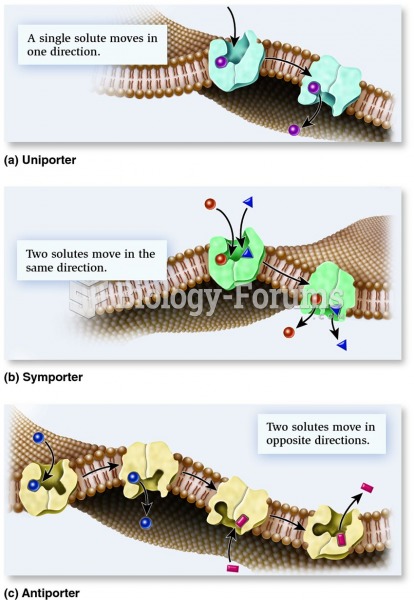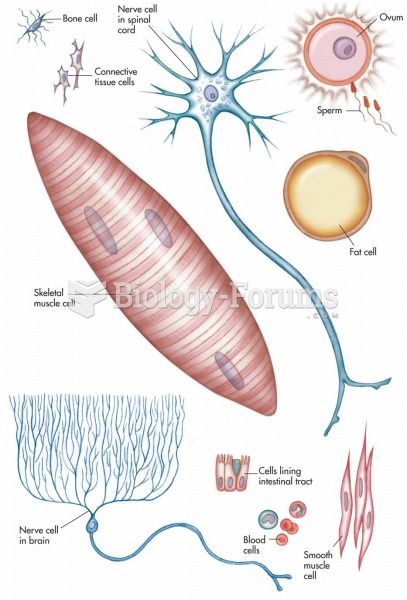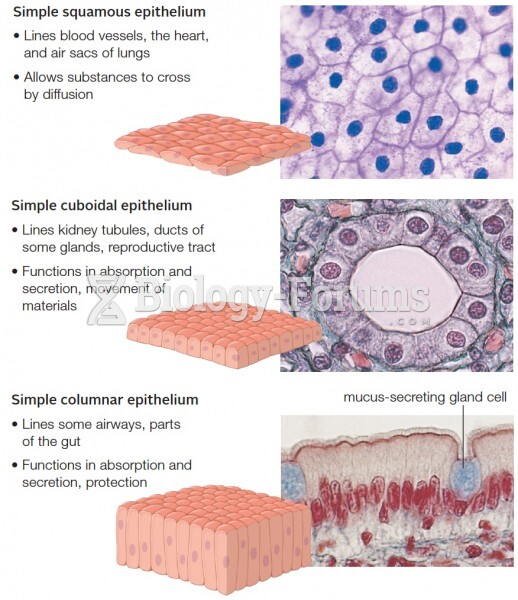|
|
|
Human stomach acid is strong enough to dissolve small pieces of metal such as razor blades or staples.
On average, someone in the United States has a stroke about every 40 seconds. This is about 795,000 people per year.
It is difficult to obtain enough calcium without consuming milk or other dairy foods.
The toxic levels for lithium carbonate are close to the therapeutic levels. Signs of toxicity include fine hand tremor, polyuria, mild thirst, nausea, general discomfort, diarrhea, vomiting, drowsiness, muscular weakness, lack of coordination, ataxia, giddiness, tinnitus, and blurred vision.
When blood is deoxygenated and flowing back to the heart through the veins, it is dark reddish-blue in color. Blood in the arteries that is oxygenated and flowing out to the body is bright red. Whereas arterial blood comes out in spurts, venous blood flows.







